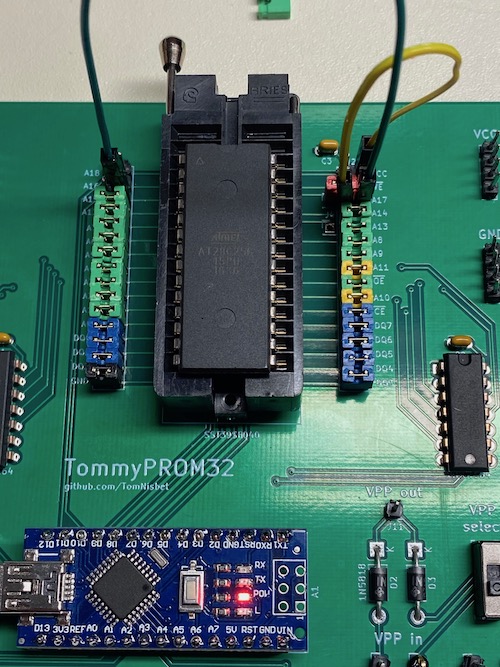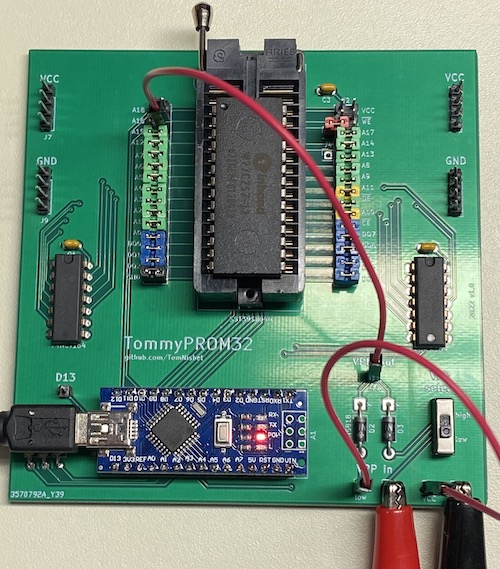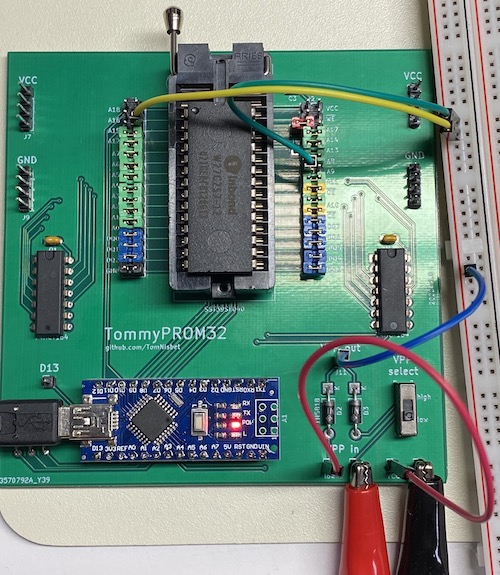3.5 KiB
| title | permalink | exerpt |
|---|---|---|
| Printed Circuit Boards | /docs/pcb | Printed Circuit Boards |
Although it was originally designed as a one-off programmer to be used on a breadboard, there are now some PCB versions.
28C256 PCB
A PCB version for the 28C256 and 28C64 chips was built to support a SAP-1 TTL breadboard computer. This project required a lot of burns for its microcode and the PCB version with the ZIF socket was much quicker than prying the chips out of a breadboard without disturbing any of the wires.
The KiCad design files are in the project repo.
TommyPROM32
TommyPROM32 was built to support SST39SF0x0 and other 32-pin EEPROM and Flash chips. While providing a stable platform for the SST39SF chips, the board can serve as a test bed for other chips as well. It uses a set of headers that allow any of the signals to the target chip to be re-routed. The default configuration, with just jumper shunts installed, is wired for the SST39SF0x0 chips.
Many other chips, particularly if they follow JEDEC standards, can be supported by removing shunts and adding just a few jumper wires.
Chips with fewer pins can also be supported. There are power pins in place to support 28-pin and 24-pin chips with a shunt to the correct VCC pin. The photo below shows the 28C256 with a power jumper on pin 28, the WE signal moved down to pin 27, and the A14 signal moved from ping 27 to pin 1.
Power inputs and a switch are provided to support older flash and EEPROM chips that need higher programming voltages. Many of these chips just need a higher voltage, like 12V, applied to the VPP pin continuously during the programing and verification cycle. In normal operation, the 5V VCC signal is applied to the VPP pin. The board has VPP inputs for two voltages. Applying 12V to VPP In High and 5V to VPP In Low lets the VPP output be switched between these two voltages using a manual slide switch for programming.
The photo below shows the WE27C257 set up for programming. The VPP in Low signal is connected to VCC and the VPP in High signal is using 12V from an external power supply. The VPP Out signal is connected to the chip's VPP on pin 1. The chip is in programming mode when the slide switch is set to the High position and is in read mode when in the Low position.
To erase the WE27C257 chip, the external power supply is providing 14V and the VPP Out is connected to the chip's VPP and A9 pins. An external breadboard was needed to allow the VPP Out signal to be connected to multiple pins. A new spin of the board is planned with multiple VPP Output pins and some general-purpose interconnect pins.
For chips that require a high voltage VPP pulse during programming, some external switching circuitry will be needed to allow the Arduino to control the VPP voltage. There is a header connected to the unused D13 pin that can support this. See the Intel 8755 version of the hardware for an example of voltage switching by TommyPROM.




